Rugs for Home Offices: Combining Comfort and Productivity
Selecting the right rug for your home office can significantly impact the workspace's overall aesthetics, comfort, and functionality. The relationship between productivity and the seemingly simple addition of rugs might not be immediately obvious, which is why we are exploring this topic today.
One of the biggest factors that improves productivity is a comfortable work environment. Rugs play a vital role in this regard. They not only add a touch of cosiness and warmth to a room but also provide a soft surface underfoot. Imagine walking into a cold, sterile office space with hard, bare floors compared to a well-designed office with soft rugs that your feet sink into. Doesn’t the latter scenario put you more at ease, giving you a relaxing feeling?

How to Select an Office Rug
Choose a Hand Tufted or Hand Knotted Rug
Many types of rugs differ by pile, material, and construction. Machine-made and hand-loomed rugs are mostly for aesthetic purposes and cannot withstand the wear and tear caused by heavy footfall and repetitive chair movement. This is why choosing a sturdier style for your office décor is better.
This is where hand-knotted rugs come in. They are quite hard-wearing and last longer if made with wool. However, they are a bit expensive. A more budget-friendly option is hand-tufted rugs. They are not as durable as hand-knotted rugs but stand the test of time if made with the right materials.
Opt for a Low Pile Rug
Office chairs have wheels for easy movement. This simple feature allows you to roll back and forth from your desk to the cabinet. This is why opt for a low-pile rug. Avoid shaggy styles, like Berber Rugs. Ensure that the pile’s height is not more than 6mm. You can also choose a Kelim or loop pile, which doesn’t have a pile.
Define Zones
Defining different zones for work, relaxation, and other activities is essential in a home office. A rug’s design and texture can help outline your workspace from the rest of the room, creating a clear boundary. This mentally prepares you for work when you step onto the rug. It’s a subtle distinction but an effective one.

A Brighter Room
The material and colour of the rug also influence how light reflects in your workspace. A light-coloured rug bounces natural light, brightening your space. This reduces eye strain and enhances visibility. On the other hand, a dark rug adds a cosy touch, which is helpful if you work in a creative field that requires a more relaxed atmosphere.
Most people choose home office rugs that reflect their personality and unique style. When browsing colours, patterns, or motifs, go with one that makes your workspace more enjoyable and aesthetically appealing. This personal touch can be a source of motivation and inspiration.
In conclusion, a well-chosen rug transforms your office into a productive and comfortable workspace. So, take your time to explore the options and find a rug that best suits your needs and personal taste.

Dive into the stunning collection of rugs by The Rugs. Our blend of timeless elegance and contemporary flair offers you various unique options. Whether you are seeking an oriental rug or something with a chic modern design, you will surely find one that will complement your space.
The Importance of Rugs in Home Offices
Rugs play a crucial role in transforming a home office from a mere functional space into a cosy and inviting work environment. They serve multiple purposes, from enhancing the aesthetics of your workspace to providing practical benefits that can improve your overall work experience.
Defining Your Workspace
In open-plan living areas or multi-purpose rooms, a rug can help delineate your office space from the rest of the room. This visual separation creates a distinct work zone, helping you mentally transition into 'work mode' when you step onto the rug. Choose a rug size that comfortably accommodates your desk and chair, with enough extra space to move around freely.
Enhancing Comfort
Standing or sitting for long periods can take a toll on your body. A plush rug underfoot provides a soft, cushioned surface that can alleviate fatigue and reduce strain on your feet, legs, and back. This added comfort can contribute to improved focus and productivity throughout your workday.
Noise Reduction
Home offices can often suffer from echo and noise reverberation, especially in rooms with hard flooring. A rug acts as a sound absorber, dampening echoes and reducing the overall noise level in your workspace. This can be particularly beneficial if you frequently participate in video calls or need a quiet environment for concentration.
Style and Personality
Your home office should reflect your personal style and inspire creativity. A rug offers an excellent opportunity to inject colour, pattern, and texture into your workspace. Whether you prefer a bold statement piece or a subtle, sophisticated design, the right rug can tie your office decor together and create a cohesive look.
Choosing the Right Rug Size for Your Home Office
Selecting the appropriate rug size is crucial for creating a balanced and functional home office space. The right dimensions can make your workspace feel more cohesive and well-proportioned. Here are some guidelines to help you choose the perfect rug size:
Small Home Offices
For compact home offices or workspaces carved out of other rooms, consider these options:
- 2' x 3' or 3' x 5' rugs: Ideal for placing under your desk chair, providing a soft surface for your feet while working.
- 4' x 6' rugs: Suitable for small office areas, accommodating both your desk and chair comfortably.
Medium-sized Home Offices
For dedicated home office rooms or larger work areas, consider:
- 5' x 8' or 6' x 9' rugs: These sizes work well for medium-sized offices, allowing space for your desk, chair, and additional furniture like a small bookshelf or filing cabinet.
- 8' x 10' rugs: Ideal for creating a defined work zone in a larger room or open-plan living space.

Large Home Offices
For spacious home offices or multi-functional rooms, consider:
- 9' x 12' or larger rugs: These generous sizes can accommodate a full office setup, including a large desk, multiple chairs, and additional storage or seating areas.
Tips for Proper Rug Placement
- Ensure that all furniture legs are either completely on or off the rug for a balanced look.
- Leave at least 6-12 inches of floor space visible around the rug's edges to create a border effect.
- In open-plan spaces, use the rug to visually separate your office area from the rest of the room.
Remember, these are general guidelines. The best rug size for your home office will depend on your specific room layout, furniture arrangement, and personal preferences.
Exploring Different Rug Materials for Home Offices
The material of your home office rug can significantly impact its durability, comfort, and maintenance requirements. Here's a breakdown of popular rug materials to help you make an informed decision:
Wool Rugs
Wool is a classic choice for home office rugs, offering numerous benefits:
- Durability: Wool rugs can withstand heavy foot traffic and maintain their appearance for years.
- Natural stain resistance: The fibres' natural oils help repel spills and stains.
- Comfort: Wool provides excellent cushioning and insulation.
- Sound absorption: Ideal for reducing noise in your workspace.
However, wool rugs can be more expensive and may require professional cleaning.
Cotton Rugs
Cotton rugs are a popular choice for their affordability and versatility:
- Easy to clean: Most cotton rugs are machine-washable, making maintenance a breeze.
- Soft texture: Provides comfort underfoot.
- Variety of styles: Available in numerous colours and patterns.
- Eco-friendly: Cotton is a renewable resource.
Keep in mind that cotton rugs may not be as durable as wool and can show wear more quickly in high-traffic areas.
Synthetic Rugs
Synthetic materials like polypropylene, nylon, and polyester offer practical benefits for home offices:
- Stain-resistant: Many synthetic rugs are treated to repel spills and stains.
- Affordable: Generally less expensive than natural fibre rugs.
- Easy to clean: Often machine-washable or easy to spot clean.
- Durable: Can withstand heavy use and maintain their appearance.
However, synthetic rugs may lack the luxurious feel of natural fibres and can be less environmentally friendly.
Jute and Sisal Rugs
These natural fibre rugs bring a touch of organic texture to your home office:
- Eco-friendly: Made from sustainable, renewable materials.
- Durable: Can withstand heavy foot traffic.
- Natural look: Adds warmth and texture to your workspace.
- Sound-absorbing: Helps reduce noise in your office.
Keep in mind that jute and sisal rugs can be rough underfoot and may not be ideal for bare feet.
Silk and Bamboo Silk Rugs
For a touch of luxury in your home office, consider silk or bamboo silk rugs:
- Elegant appearance: Adds a sophisticated sheen to your workspace.
- Soft texture: Provides a luxurious feel underfoot.
- Vibrant colours: Silk rugs often feature rich, saturated hues.
However, these rugs are typically more delicate and may require professional cleaning and maintenance.
When choosing a rug material for your home office, consider factors such as durability, maintenance requirements, comfort, and your personal style preferences. Balancing these aspects will help you select a rug that enhances your workspace both functionally and aesthetically.
Stylish Rug Designs for Home Offices
The design of your home office rug can significantly impact the overall ambiance of your workspace. From classic patterns to contemporary styles, there's a wide range of options to suit every taste and office decor. Here are some popular rug designs to consider:
Geometric Patterns
Geometric rugs can add a modern and dynamic touch to your home office:
- Bold shapes: Triangles, hexagons, or abstract geometric designs create visual interest.
- Colour combinations: Choose contrasting colours for a striking look or complementary hues for a subtle effect.
- Scale: Large-scale patterns can make a small office feel more spacious, while smaller patterns add texture without overwhelming the space.
Persian and Oriental Designs
For a touch of timeless elegance, consider Persian or Oriental-inspired rugs:
- Intricate patterns: Floral motifs, medallions, and borders add sophistication to your workspace.
- Rich colours: Deep reds, blues, and golds create a warm and inviting atmosphere.
- Versatility: These designs can complement both traditional and contemporary office decor.
Solid Colours
Solid-coloured rugs offer a clean, minimalist look that can help create a focused work environment:
- Neutral tones: Beige, grey, or taupe rugs provide a calming backdrop for your office.
- Bold hues: A vibrant solid-coloured rug can serve as a statement piece in your workspace.
- Texture: Look for rugs with subtle texture or pile variations to add depth to solid colours.
Stripes and Chevron
Linear patterns can add a sense of movement and energy to your home office:
- Vertical stripes: Can make a small office appear longer or taller.
- Horizontal stripes: Create a sense of width in narrow spaces.
- Chevron patterns: Add a dynamic, modern touch to your workspace.
Abstract and Artistic Designs
For a creative and inspiring home office, consider rugs with abstract or artistic patterns:
- Watercolour effects: Soft, blended colours create a soothing atmosphere.
- Bold brushstrokes: Add energy and visual interest to your workspace.
- Contemporary art-inspired designs: Reflect your personal style and spark creativity.
Natural and Organic Patterns
Bring a touch of nature into your home office with rugs featuring organic designs:
- Botanical prints: Leaf or floral patterns create a fresh, vibrant look.
- Wood grain effects: Add warmth and texture to your workspace.
- Stone or marble-inspired designs: Offer a sophisticated, natural aesthetic.
When selecting a rug design for your home office, consider how it will complement your existing decor, furniture, and wall colours. Choose a pattern that resonates with your personal style while creating an environment conducive to productivity and creativity.
Colour Psychology in Home Office Rugs
The colour of your home office rug can have a significant impact on your mood, productivity, and overall work environment. Understanding colour psychology can help you choose a rug that not only looks great but also supports your work goals. Here's a guide to different colour options and their potential effects:
Blue Tones
Blue is often associated with calmness, focus, and productivity:
- Light blue: Creates a serene, tranquil atmosphere, ideal for reducing stress.
- Navy blue: Promotes concentration and professionalism.
- Teal: Combines the calming effects of blue with the refreshing qualities of green.
Consider blue rugs for offices where you need to maintain focus and reduce anxiety.
Green Hues
Green is linked to nature, balance, and creativity:
- Sage green: Offers a soothing, natural feel to your workspace.
- Emerald green: Adds a touch of luxury while promoting harmony.
- Mint green: Creates a fresh, invigorating atmosphere.
Green rugs can be particularly beneficial in offices lacking natural views or plant life.
Warm Colours
Reds, oranges, and yellows can energize your workspace:
- Red: Stimulates energy and passion but should be used sparingly to avoid overstimulation.
- Orange: Encourages enthusiasm and creativity.
- Yellow: Promotes optimism and mental clarity.
Consider warm-coloured rugs for areas where you need to boost energy and creativity.
Neutral Tones
Beige, grey, and brown offer versatility and a calming effect:
- Beige: Creates a warm, inviting atmosphere without being distracting.
- Grey: Provides a modern, sophisticated look that promotes focus.
- Brown: Adds warmth and a grounding effect to your workspace.
Neutral rugs are excellent choices for creating a balanced, professional home office environment.

Purple Shades
Purple is associated with luxury, creativity, and wisdom:
- Lavender: Offers a calming effect while stimulating creativity.
- Deep purple: Adds a sense of luxury and sophistication to your office.
Consider purple rugs for offices where you want to inspire creativity and innovation.
Black and White
Monochromatic schemes can create a sleek, focused environment:
- Black: Adds drama and sophistication but should be balanced with lighter elements.
- White: Creates a clean, spacious feel and can brighten up dark offices.
- Black and white patterns: Offer visual interest while maintaining a professional look.
When choosing a rug colour for your home office, consider the following factors:
- Natural light: Darker rugs can absorb light, while lighter colours can help brighten a dim space.
- Room size: Light-coloured rugs can make small offices feel larger, while darker hues can add coziness to spacious rooms.
- Existing decor: Choose a rug colour that complements your furniture, wall colour, and overall office aesthetic.
- Personal preferences: Select colours that resonate with you and make you feel comfortable and productive.
Remember, you can also combine colours in patterns or choose multi-toned rugs to create a balanced and visually interesting workspace.
Practical Considerations for Home Office Rugs
While style and aesthetics are important, there are several practical factors to consider when choosing a rug for your home office. These considerations will ensure that your rug not only looks great but also functions well in your workspace:
Durability and Wear Resistance
Your home office rug should be able to withstand daily use and potential wear from office chairs:
- Look for rugs with a low pile height to prevent snagging from chair wheels.
- Consider rugs made from durable materials like wool, nylon, or polypropylene.
- For areas with heavy foot traffic or chair movement, opt for flatweave rugs or those with a tight, dense pile.
Easy Maintenance and Cleaning
Choose a rug that's easy to clean and maintain to keep your workspace looking fresh:
- Machine-washable rugs offer convenience for quick cleaning.
- Stain-resistant materials or treatments can help protect against spills and accidents.
- Consider rugs with patterns or mottled designs that can help conceal minor stains or dirt between cleanings.
Non-Slip Properties
Ensure your office rug stays in place to prevent tripping hazards:
- Look for rugs with non-slip backing or use a rug pad underneath.
- For area rugs, consider options with rubberized edges to keep corners from curling.
- If using a rug pad, ensure it's compatible with your flooring type to prevent damage.
Allergen Resistance
If you have allergies or sensitivities, choose a rug that won't exacerbate these issues:
- Natural fibres like wool and cotton are less likely to trap allergens compared to synthetic materials.
- Consider low-pile or flatweave rugs, which are easier to clean thoroughly.
- Look for rugs certified as hypoallergenic or those treated to resist dust mites and other common allergens.
Sound Absorption
A rug can help reduce noise in your home office, creating a more peaceful work environment:
- Thicker, plush rugs generally offer better sound absorption.
- Consider adding a rug pad for additional noise reduction, especially on hard flooring.
- Larger rugs that cover more floor space will be more effective at dampening sound.
Temperature Regulation
Your office rug can contribute to the overall comfort of your workspace:
- Wool rugs provide natural insulation, helping to keep your office warm in colder months.
- Cotton or synthetic rugs can feel cooler underfoot, which may be preferable in warmer climates.
- Consider seasonal rug changes to adapt to different temperature needs throughout the year.
Compatibility with Office Furniture
Ensure your rug works well with your existing office setup:
- For rolling office chairs, choose a rug that allows smooth movement without snagging.
- If using a standing desk, consider an anti-fatigue mat or a low-pile rug for comfort while standing.
- Ensure the rug size accommodates all furniture legs to prevent wobbling or uneven surfaces.
Eco-Friendly Options
For environmentally conscious choices, consider:
- Rugs made from natural, renewable materials like wool, cotton, or jute.
- Recycled or upcycled rug options made from reclaimed materials.
- Look for rugs with eco-friendly certifications or those produced using sustainable manufacturing processes.
By taking these practical considerations into account, you can select a home office rug that not only enhances the aesthetics of your workspace but also meets your functional needs. Remember to balance style with practicality to create a home office environment that's both beautiful and conducive to productivity.
Innovative Rug Ideas for Modern Home Offices
As home offices evolve to meet the needs of contemporary work life, so too do the rug options available. Here are some innovative rug ideas that can add a modern touch to your home office while addressing common workspace challenges:
Modular Rug Systems
Modular rug systems offer flexibility and customization for your home office:
- Mix and match different colours and patterns to create a unique look.
- Easily replace individual tiles if damaged or stained.
- Adjust the size and shape of your rug as your office layout changes.
These systems are particularly useful for open-plan spaces or offices that may need to adapt over time.
Smart Rugs
Embrace technology with rugs that offer innovative features:
- Heated rugs: Provide warmth underfoot in colder climates or during winter months.
- LED-integrated rugs: Add ambient lighting or create visual cues for different work zones.
- Pressure-sensitive rugs: Can be programmed to track movement or trigger smart home features.
While still emerging, these high-tech options can add both functionality and a futuristic touch to your workspace.
Acoustic Rugs
Designed specifically for sound absorption, acoustic rugs can significantly improve the acoustics in your home office:
- Made with special materials or constructions to maximize sound dampening
Rugs for Home Office: Enhancing Comfort and Style
Choosing the right rug for your home office can significantly impact both comfort and aesthetics. A well-selected rug can define your workspace, add warmth, and reduce noise. Consider rugs that complement your office decor while providing a comfortable surface underfoot. Opt for materials that are durable and easy to clean, ensuring your workspace remains tidy and professional.

Best Rugs for Home Office: Top Choices for Productivity
The best rugs for a home office combine style, comfort, and practicality. Look for ergonomic designs that support long hours of work. Low-pile rugs are ideal for easy movement of office chairs, while durable materials like wool or synthetic blends ensure longevity. Consider rugs with neutral colours or subtle patterns that won't distract from your work environment. Anti-static properties can also be beneficial in reducing dust and maintaining a clean workspace.

Area Rugs for Home Office: Defining Your Workspace
Area rugs are perfect for defining specific zones within your home office. Choose a rug that fits well within your office layout, ensuring it covers the main working area. Rectangular rugs are ideal for traditional desk setups, while round rugs can add a unique touch to creative spaces. Opt for patterns and colours that complement your office furniture and decor, creating a cohesive and inviting workspace.

Modern Rugs for Home Office: Sleek and Stylish Options
Modern rugs can add a touch of sophistication to your home office. Look for designs with clean lines, geometric patterns, or abstract motifs that reflect contemporary aesthetics. Monochromatic colour schemes or bold contrasts can make a statement while maintaining a professional look. Consider materials like polypropylene or nylon for durability and easy maintenance. Modern rugs can enhance the overall ambiance of your office, making it a more enjoyable place to work.

Cool Rugs for Home Office: Unique Designs for a Creative Space
Cool rugs can infuse your home office with personality and creativity. Look for unique patterns, vibrant colours, or artistic designs that inspire and motivate you. Vintage-inspired rugs or bohemian styles can add a touch of eclectic charm. Consider custom designs or handmade rugs for a truly one-of-a-kind look. Cool rugs can transform your office into a space that reflects your individuality and creative spirit.
Rugs for Small Home Office: Maximising Space and Comfort
In a small home office, the right rug can make a significant difference in comfort and style. Opt for compact rugs that fit well within your limited space without overwhelming it. Light colours and simple patterns can create an illusion of more space. Consider multi-functional rugs that offer both comfort and practicality, such as those with built-in anti-fatigue properties. A well-chosen rug can make your small office feel more spacious and inviting.

Fun Rugs for Home Office: Adding a Playful Touch
Fun rugs can bring a sense of joy and creativity to your home office. Look for designs with playful patterns, bright colours, or whimsical motifs that make you smile. Themed rugs related to your interests or hobbies can add a personal touch. Consider interactive rugs with textures or elements that engage your senses. Fun rugs can make your office a more enjoyable place to spend time, boosting your mood and productivity.
Good Rugs for Home Office: Balancing Comfort and Functionality
Good rugs for a home office strike a balance between comfort and functionality. Look for ergonomic designs that support long hours of work. Durable materials like wool or synthetic blends ensure longevity and easy maintenance. Low-pile rugs are ideal for easy movement of office chairs, while anti-static properties help maintain a clean workspace. Choose colours and patterns that complement your office decor, creating a cohesive and professional look.

Rugs for Men's Home Office: Masculine and Stylish Choices
Rugs for a men's home office should reflect a masculine and sophisticated style. Look for designs with rich colours, bold patterns, or textured materials that add depth and character. Leather or wool rugs can provide a rugged yet refined look. Consider geometric patterns or abstract designs that convey a sense of strength and professionalism. A well-chosen rug can enhance the overall ambiance of a men's home office, making it a more enjoyable and productive space.

Low Pile Rugs for Home Office: Practical and Comfortable Options
Low pile rugs are ideal for home offices, offering both practicality and comfort. These rugs provide a smooth surface for easy movement of office chairs, reducing wear and tear on both the rug and the chair wheels. Durable materials like polypropylene or nylon ensure longevity and easy maintenance. Low pile rugs come in a variety of colours and patterns, allowing you to choose a design that complements your office decor while providing a comfortable and functional workspace.
People Also Asked
Should I put a rug in my home office?
Adding a rug to your home office can enhance comfort and reduce noise. It also helps define your workspace and adds a personal touch to your environment.
How big should a home office rug be?
A home office rug should be large enough to accommodate your desk and chair when pulled out. Ideally, it should extend at least 24 inches beyond the desk on all sides.
How do I choose an office area rug?
Choose an office area rug based on durability, ease of maintenance, and style. Consider low-pile options for easy chair movement and neutral colors for a professional look.
How dirty are office carpets?
Office carpets can accumulate significant dirt and bacteria over time. Regular vacuuming and professional cleaning are essential to maintain a healthy work environment.
Can I use a rug instead of a chair mat?
While possible, it's not ideal. Rugs may not provide the smooth surface needed for easy chair movement. A low-pile, durable rug could work, but a chair mat offers better protection.
What type of carpet is best for a home office?
The best carpet for a home office is typically a low-pile, durable option like berber or commercial-grade carpet tiles. These withstand heavy foot traffic and chair movement.
How to fit a rug in a home office?
Fit a rug in your home office by centering it under your desk. Ensure it's large enough to accommodate your chair when pulled out and leaves some bare floor around the edges.
What floor should I put in my home office?
Ideal flooring for a home office includes hardwood, laminate, or low-pile carpet. These options offer durability, easy maintenance, and a professional appearance.
Is it OK not to have a rug?
It's perfectly fine not to have a rug. Bare floors can create a clean, minimalist look and are often easier to maintain. Consider your comfort needs and office aesthetics.
Should an office be carpeted?
Carpeting an office can reduce noise and increase comfort. However, hard flooring with area rugs offers more flexibility and can be easier to maintain in high-traffic areas.
What are the benefits of carpet flooring in office?
Carpet flooring in an office provides noise reduction, comfort underfoot, improved insulation, and can create a warmer atmosphere. It also helps prevent slips and falls.
Should I put a rug under my desk?
Placing a rug under your desk can define your workspace, add comfort, and protect the floor. Ensure it's large enough to accommodate your chair when pulled out.
How to choose carpet for office?
Choose office carpet based on durability, stain resistance, and ease of maintenance. Consider neutral colors and low-pile options for a professional look and easy chair movement.
How do I choose a rug for my office?
Select an office rug based on size (should fit your workspace), durability (to withstand chair movement), style (complementing your decor), and maintenance requirements.
What is the best pile height for office rugs?
The best pile height for office rugs is typically 1/4 inch to 1/2 inch. This low-pile height allows for easy chair movement while still providing comfort and noise reduction.
What size rug for a 10x12 office?
For a 10x12 office, consider an 8x10 rug or a 9x12 rug. This allows for some bare floor around the edges while still covering most of the space.
How do you style a rug in a home office?
Style a home office rug by centering it under your desk, using it to define your workspace. Choose colors and patterns that complement your office decor and create a professional atmosphere.
How big should a rug be in a home office?
A home office rug should be large enough to accommodate your desk and chair when pulled out. Aim for at least 24 inches of rug beyond the desk on all sides.
What is the best carpet for a home office?
The best carpet for a home office is typically a low-pile, durable option like berber or commercial-grade carpet tiles. These withstand heavy use and facilitate easy chair movement.
What is the best carpet material for office?
The best carpet materials for offices include nylon for durability, polyester for stain resistance, and wool for a premium feel. Olefin is also a good budget-friendly option.
Can you use a rug as an office chair mat?
While possible, it's not ideal. Rugs may not provide the smooth surface needed for easy chair movement. A low-pile, durable rug could work, but a chair mat offers better protection.
Should I have rug in office?
A rug in your office can enhance comfort, reduce noise, and add style. Consider factors like maintenance, chair movement, and your overall office aesthetic when deciding.
Should I put carpet in home office?
Carpet in a home office can provide comfort and noise reduction. However, hard flooring with an area rug offers more flexibility and can be easier to maintain.
What type of rug is best for an office?
The best rugs for offices are typically low-pile, durable options that can withstand chair movement. Consider neutral colors or subtle patterns for a professional look.
Should you have a rug at front door?
Yes, a rug at the front door is beneficial. It traps dirt and moisture, protects your flooring, and adds a welcoming touch to your entrance.
How to keep a rug from bunching under an office chair?
Prevent rug bunching by using a rug pad, choosing a low-pile rug, or using rug tape. Consider a chair mat over the rug in high-traffic areas for added protection.
What is the best rug for a home office?
The best rug for a home office combines durability and style. A low-pile, tightly woven rug made from synthetic fibers like nylon or polyester offers excellent resistance to wear and tear from office chairs. Look for rugs with stain-resistant properties to protect against coffee spills and ink marks. A rug with a subtle pattern or neutral color can help hide dirt while maintaining a professional appearance. Consider a rug with anti-static properties to prevent electrical interference with your devices.
What type of rug for home office?
For a home office, opt for a low-pile or flatweave rug. These types allow for easy movement of office chairs and reduce the risk of tripping. A rug with a firm, dense construction will withstand the constant pressure from chair wheels and foot traffic. Consider rugs with geometric patterns or subtle textures that can mask small stains or wear patterns. Area rugs that cover the main workspace are ideal, leaving some hard flooring exposed for easy cleaning and a professional look.
What is the best material for office carpet?
The best material for office carpet is synthetic fiber, particularly nylon or polyester. These materials offer superior durability, stain resistance, and easy maintenance. Nylon carpets are known for their resilience and ability to maintain appearance even in high-traffic areas. Polyester carpets provide excellent color clarity and are naturally stain-resistant. For a more eco-friendly option, consider carpets made from recycled materials. Regardless of the material, choose a carpet with a tight, low pile for easy chair movement and minimal dirt accumulation.
What flooring is best for a home office?
The best flooring for a home office should balance durability, comfort, and aesthetics. Hardwood flooring is a popular choice, offering a classic look and easy maintenance. Luxury vinyl plank (LVP) provides the appearance of wood with enhanced durability and water resistance. For a softer surface, low-pile commercial-grade carpet tiles offer comfort and easy replacement of damaged sections. Cork flooring is an excellent option for its natural sound-dampening properties and comfort underfoot. Whatever your choice, ensure it can withstand chair wheels and frequent foot traffic.
Is carpet or wood better for home office?
Both carpet and wood have their merits for a home office, and the choice depends on your specific needs. Carpet offers better sound absorption and a softer surface for comfort during long work hours. It can also help reduce glare on computer screens. However, wood flooring provides a more professional look and is generally easier to clean and maintain. Wood is also more durable against chair wheels and allows for easier movement. A popular compromise is using wood flooring with a large area rug under the desk area, combining the benefits of both materials.
Will my office chair ruin my carpet?
An office chair can potentially damage carpet, but with proper precautions, you can minimize the risk. Choose a chair mat designed for carpets to distribute the weight of the chair and protect the carpet fibers. Opt for chairs with larger, softer wheels that are less likely to snag or crush carpet fibers. Regularly rotate your chair's position to prevent wear patterns. For added protection, consider using a low-pile, high-density carpet that's more resistant to crushing and matting. With these measures, you can enjoy the comfort of carpet in your home office without sacrificing its appearance or longevity.
Related Blog Posts
8 Home Office Ideas for a Comfy Working Space
Related Rug Collections




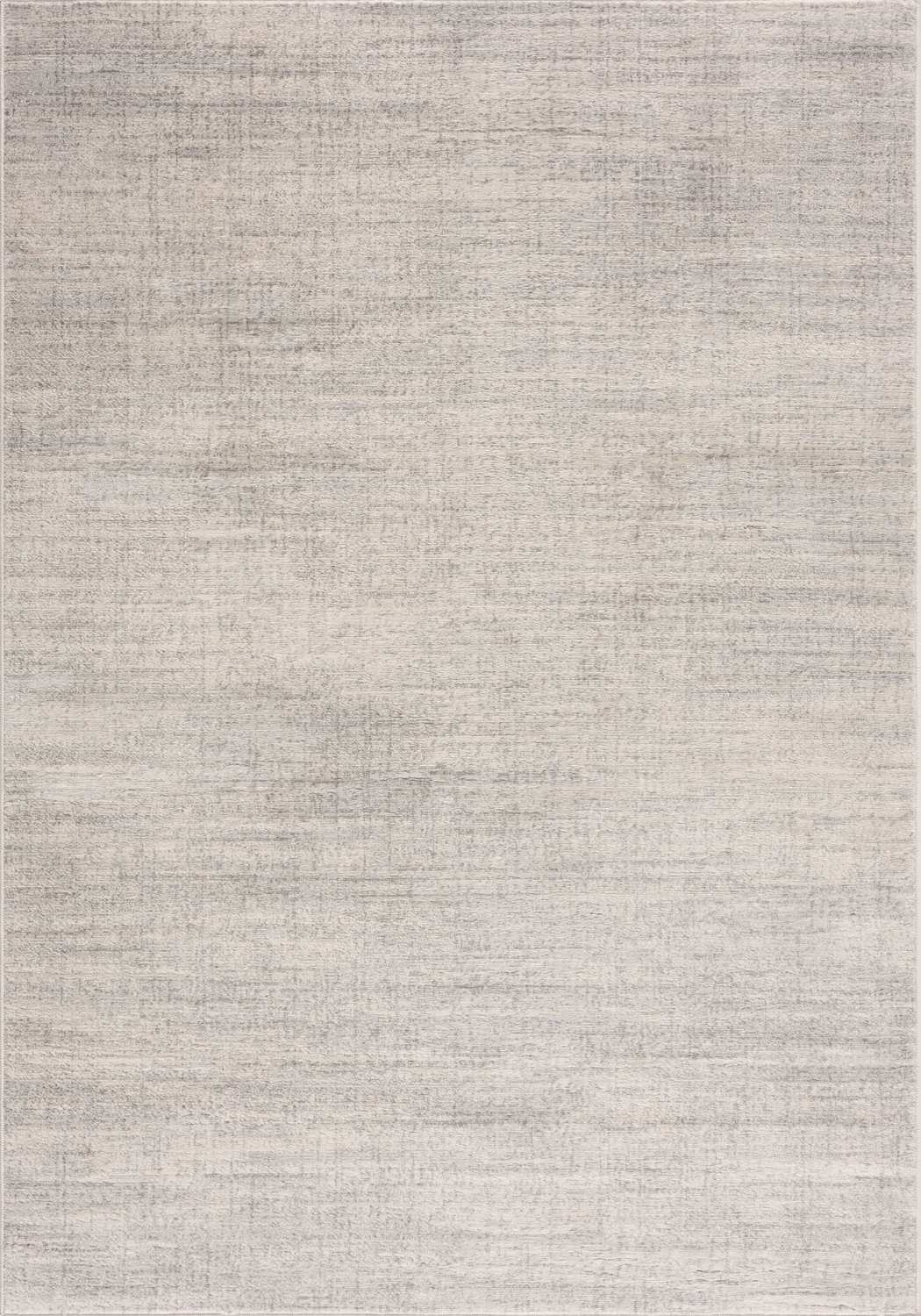
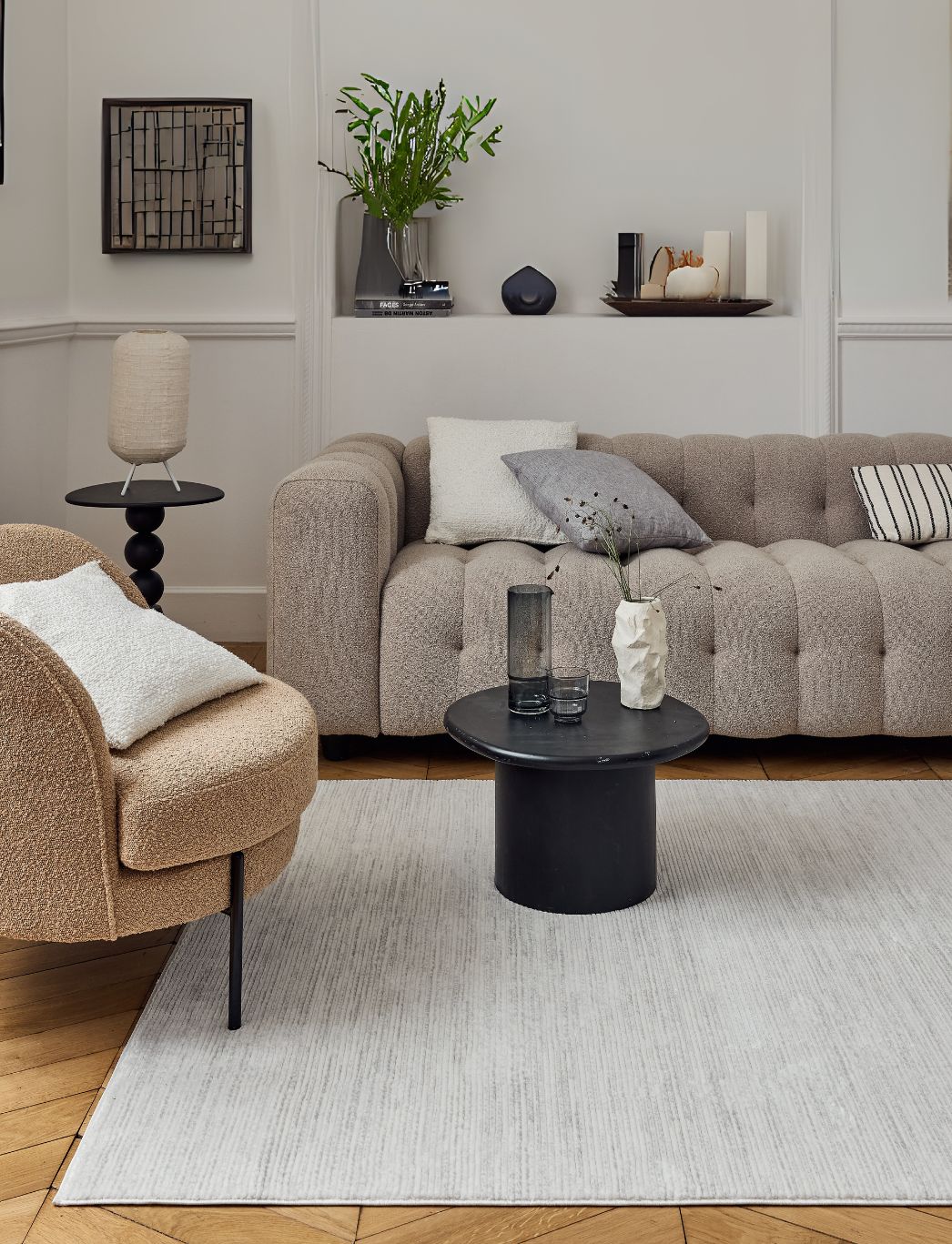
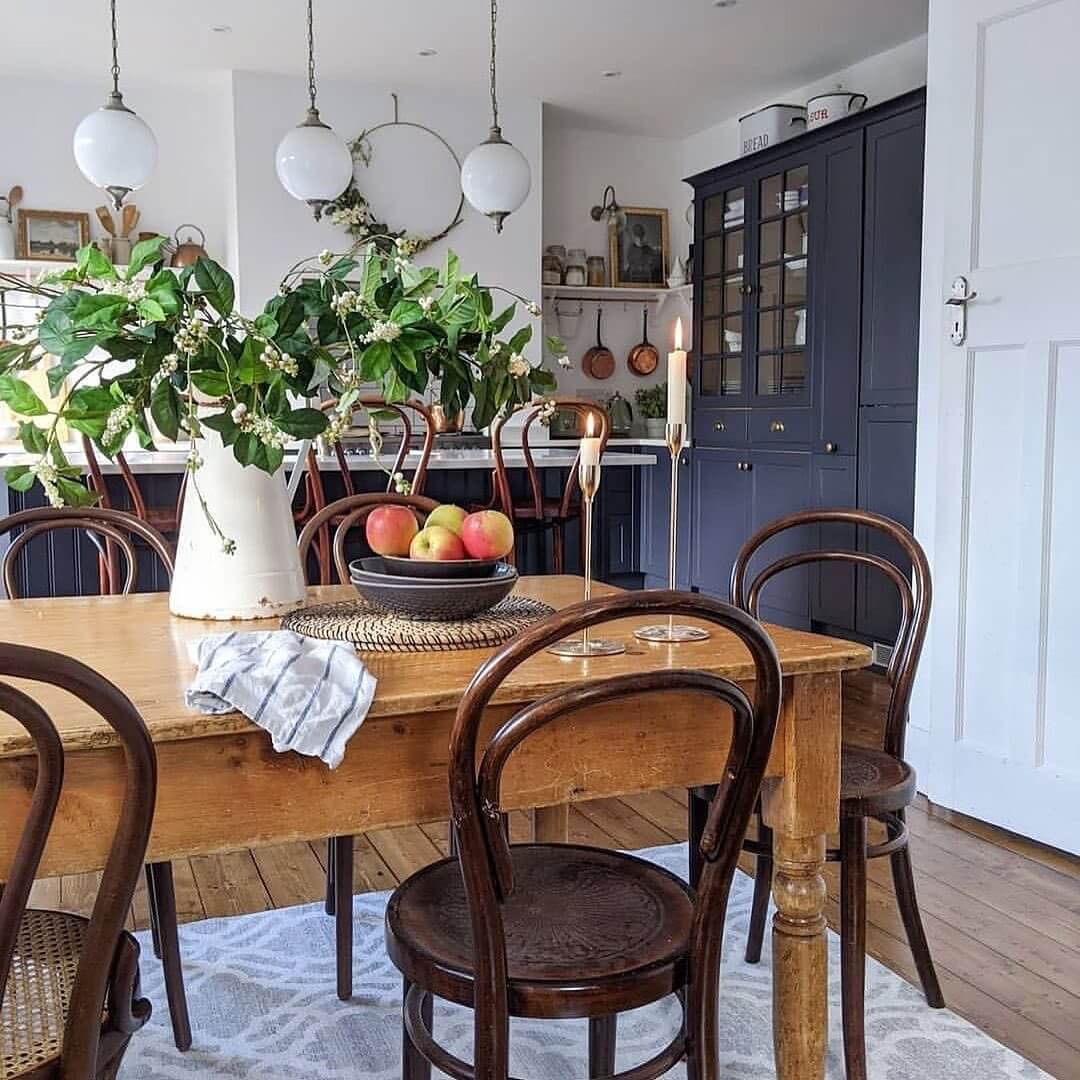
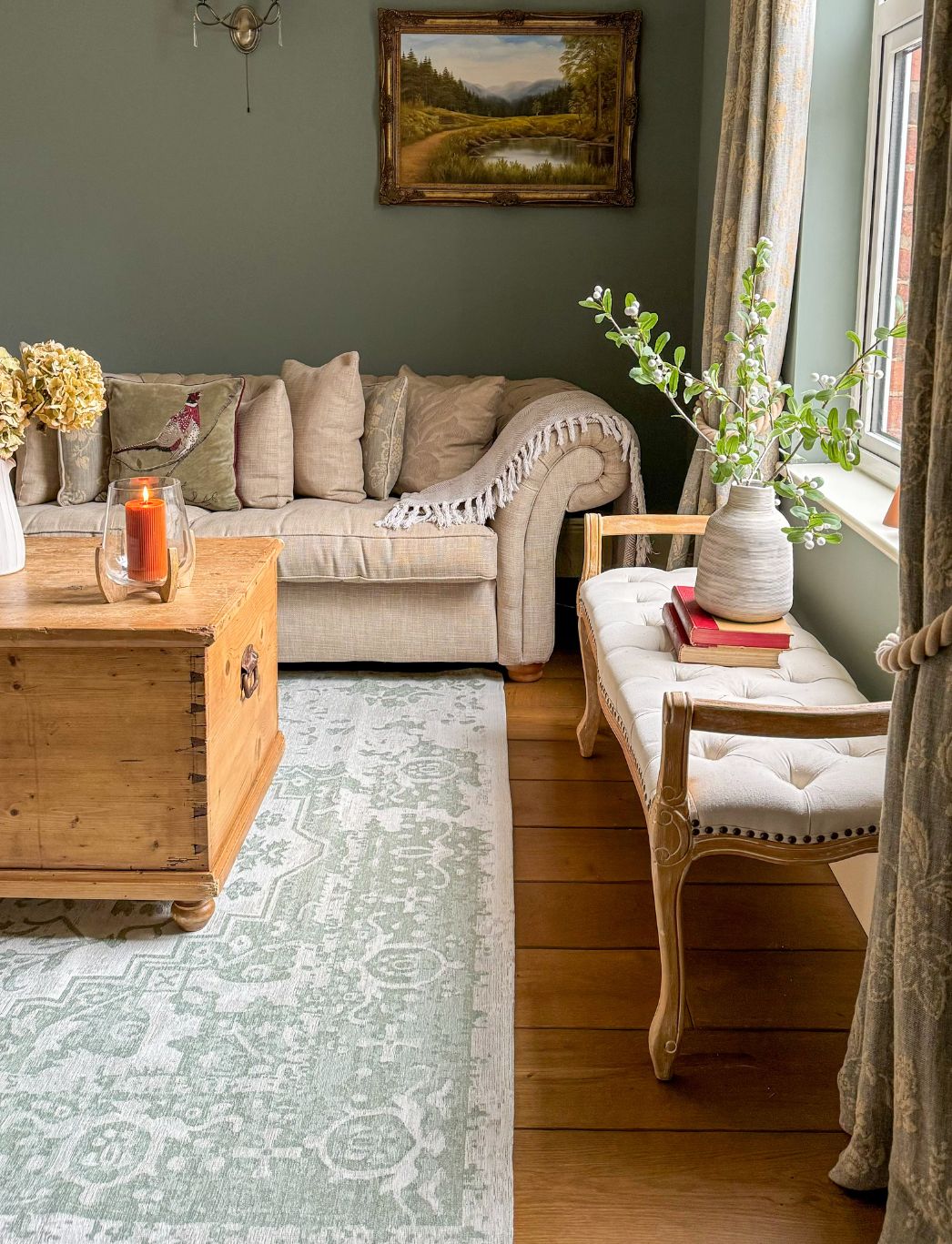
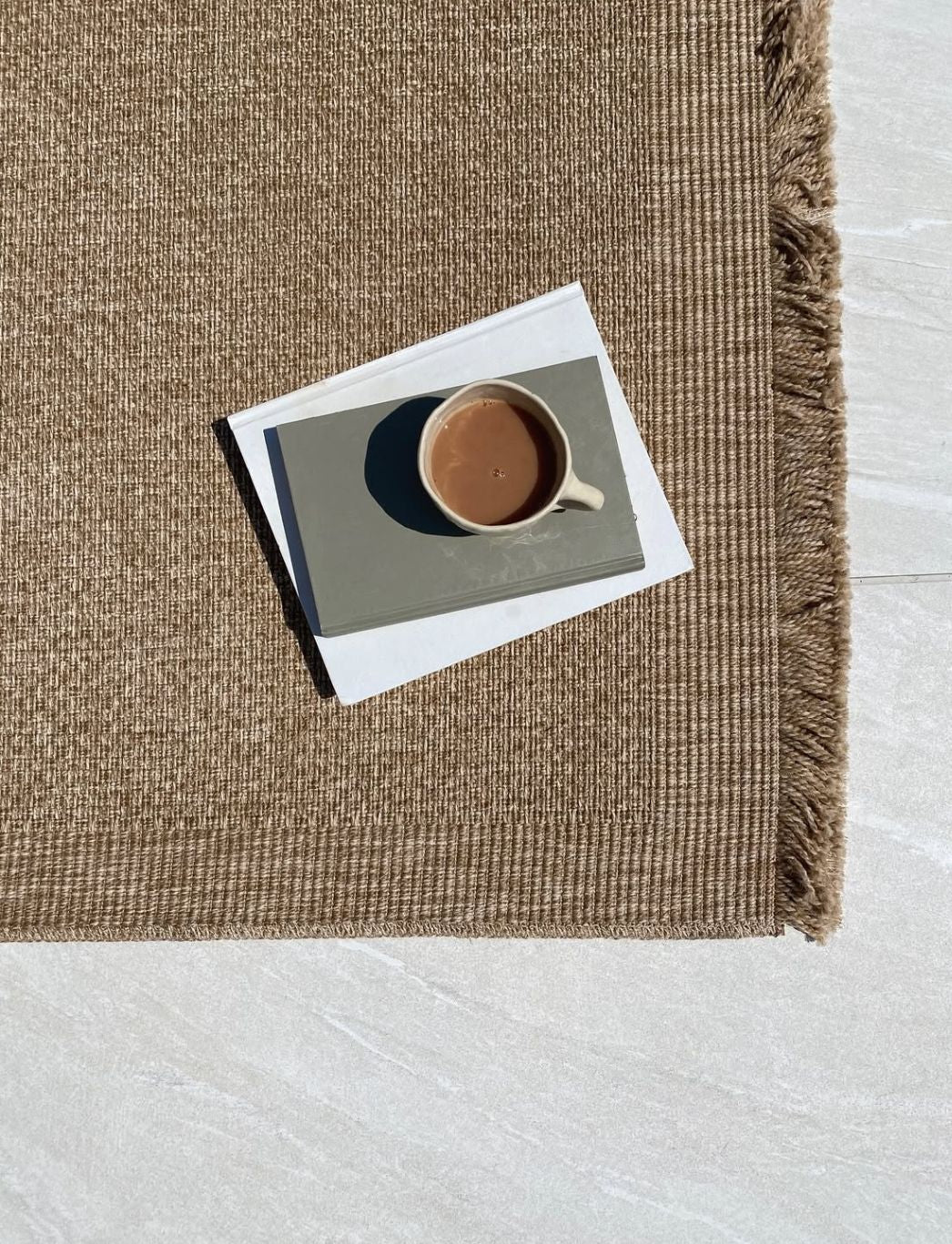
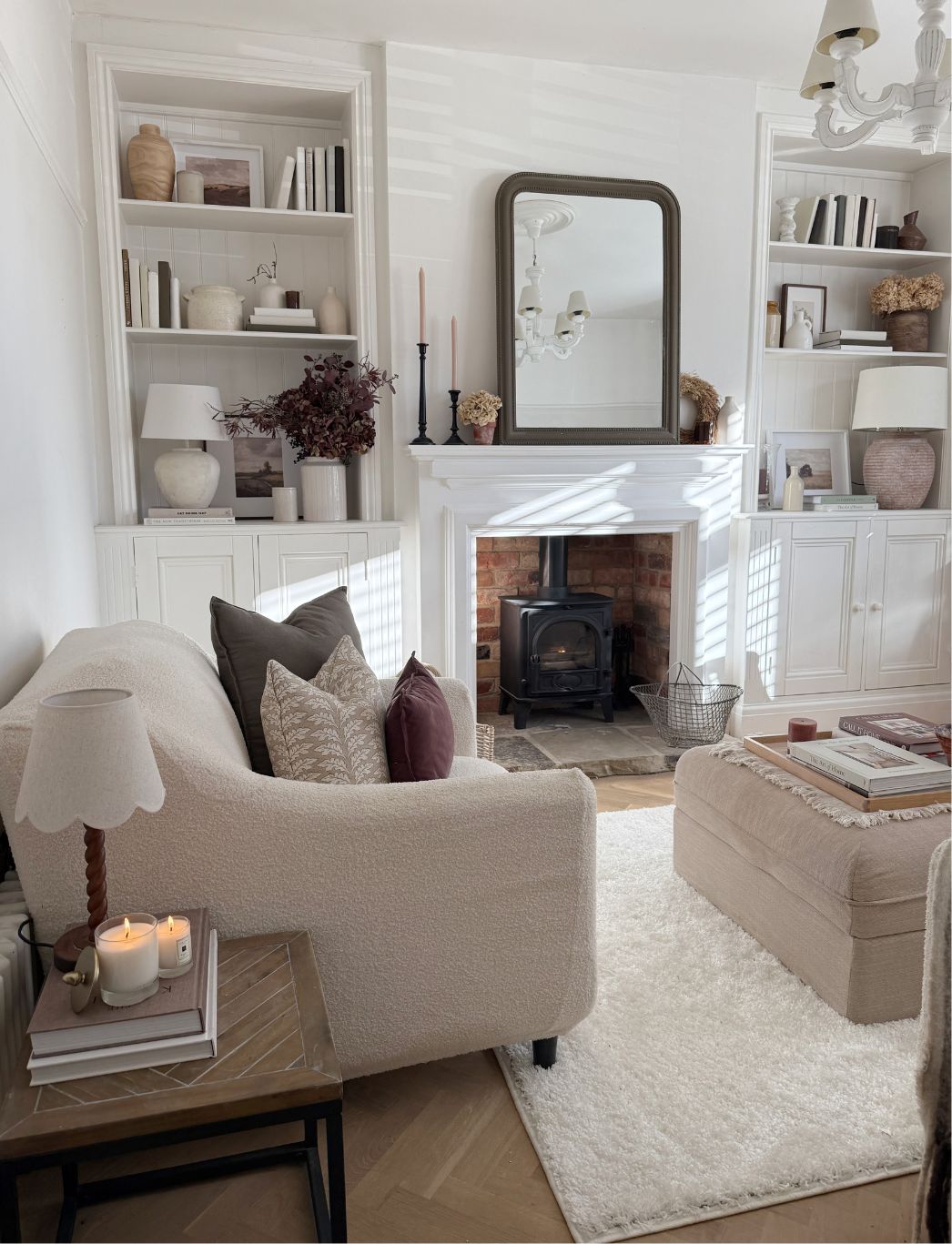
Leave a comment